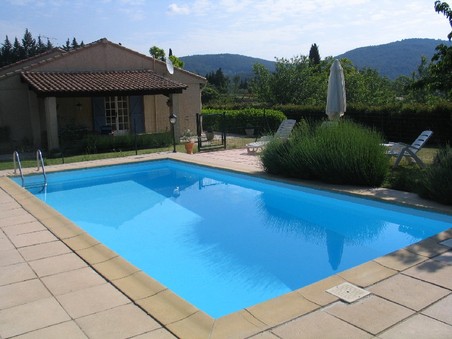Do you own a pool or hot tub? Do you pay someone to look after it? If you do then you might want to consider doing the work yourself. All the different chemicals can make it seem intimidating, but it’s really quite simple. After the initial start-up you real only have to worry about two chemicals for the most part, and depending on how often you use it you may only have to check it a couple times a week.
Get a Test Kit
Professional tests kits can be expensive, but your basic kits for homeowners are pretty cheap. I would recommend going for the kits where you test the water by putting drops of dye in it. Avoid the test strips that you put in the water, as I find these can be a little inaccurate and often hard to read. Just get a kit that tests for pH and chlorine/bromine. Any other tests can be done at your local pool and hot tub store.
Balancing the Water
When you start up your pool or hot tub you will need to add a number of different chemicals to the water. Get an empty clean container and fill it with your pool water and bring to your local pool and hot tub store for testing. They will give you a list of chemicals you need to add, and how much of each need to be added. If there isn’t any water in your pool or hot tub still visit the store for advice. They will know what kind of chemicals you need to add to your local water supply to properly balance it.
The main levels you want to worry about at this stage are calcium hardness and alkalinity. Calcium hardness should be around 250-300 ppm, while alkalinity should be 80-120 ppm. Once these levels have been attained they should remain pretty stable. Bring a water test to the experts every once and a while just to be sure everything is correct. You will likely have to make a few small adjustments throughout the year.
Sanitizer and pH
Once your pool or hot tub is up and running you will mostly be keeping track of the sanitizer level and the pH. If you’re using chlorine, keep the level between 1-3 ppm. Bromine should be kept between 2-6 ppm. pH should always be between 7.2 and 7.6. Remember, any time you have to make adjustments add chemicals in small doses. It’s a lot easier to increase chemical levels than it is to lower them.
Good luck!
Get a Test Kit
Professional tests kits can be expensive, but your basic kits for homeowners are pretty cheap. I would recommend going for the kits where you test the water by putting drops of dye in it. Avoid the test strips that you put in the water, as I find these can be a little inaccurate and often hard to read. Just get a kit that tests for pH and chlorine/bromine. Any other tests can be done at your local pool and hot tub store.
Balancing the Water
When you start up your pool or hot tub you will need to add a number of different chemicals to the water. Get an empty clean container and fill it with your pool water and bring to your local pool and hot tub store for testing. They will give you a list of chemicals you need to add, and how much of each need to be added. If there isn’t any water in your pool or hot tub still visit the store for advice. They will know what kind of chemicals you need to add to your local water supply to properly balance it.
The main levels you want to worry about at this stage are calcium hardness and alkalinity. Calcium hardness should be around 250-300 ppm, while alkalinity should be 80-120 ppm. Once these levels have been attained they should remain pretty stable. Bring a water test to the experts every once and a while just to be sure everything is correct. You will likely have to make a few small adjustments throughout the year.
Sanitizer and pH
Once your pool or hot tub is up and running you will mostly be keeping track of the sanitizer level and the pH. If you’re using chlorine, keep the level between 1-3 ppm. Bromine should be kept between 2-6 ppm. pH should always be between 7.2 and 7.6. Remember, any time you have to make adjustments add chemicals in small doses. It’s a lot easier to increase chemical levels than it is to lower them.
Good luck!

 RSS Feed
RSS Feed